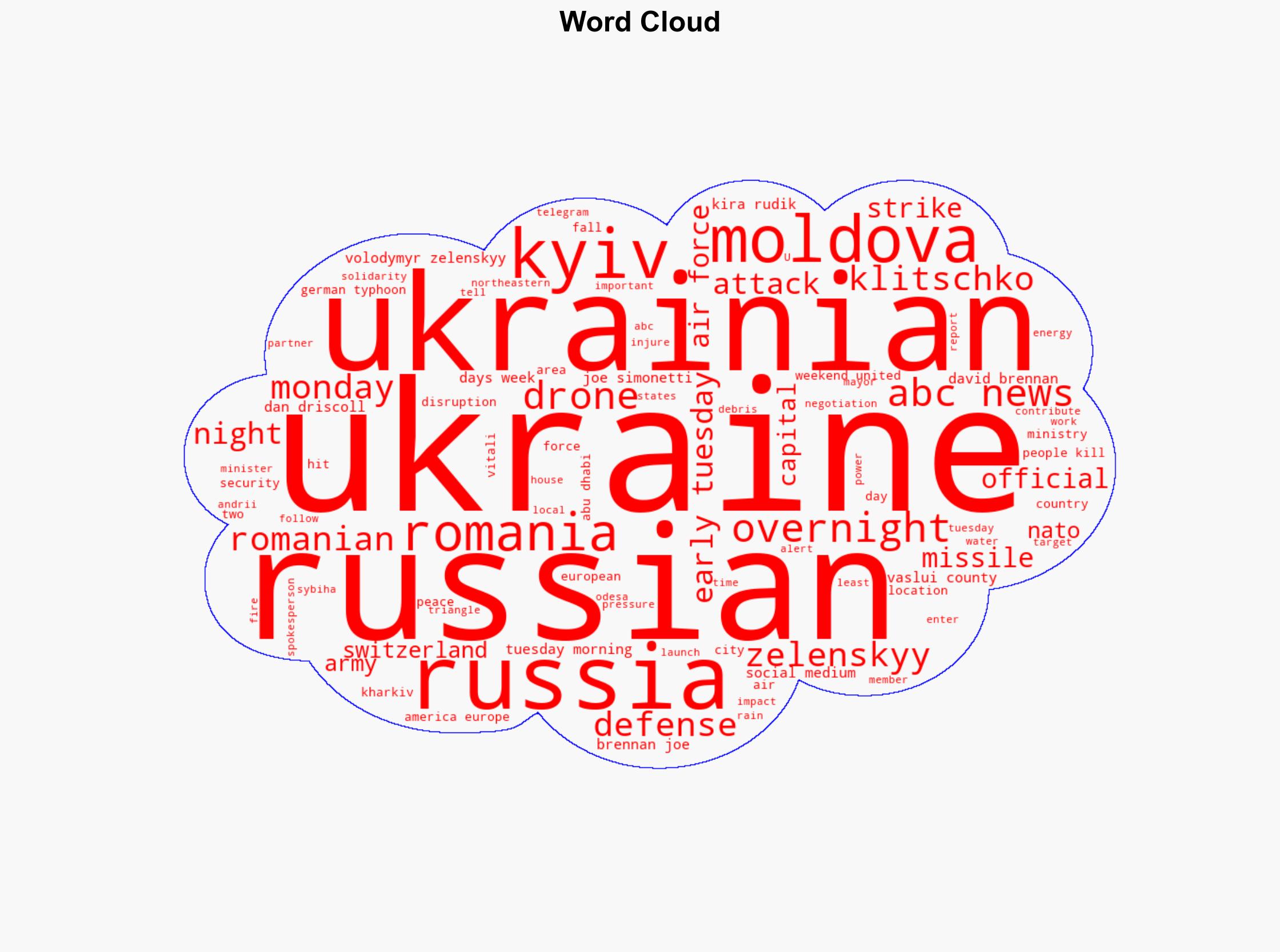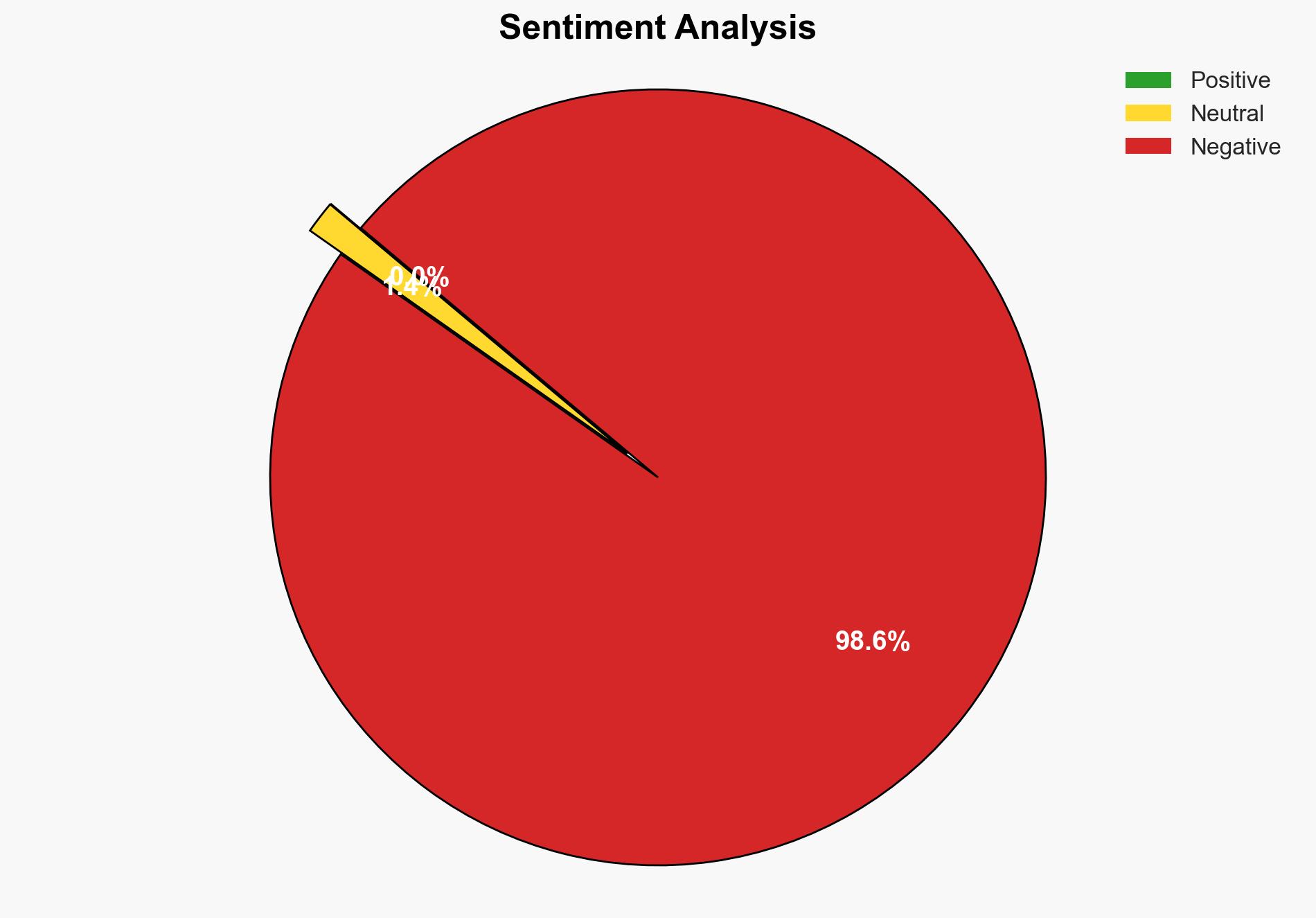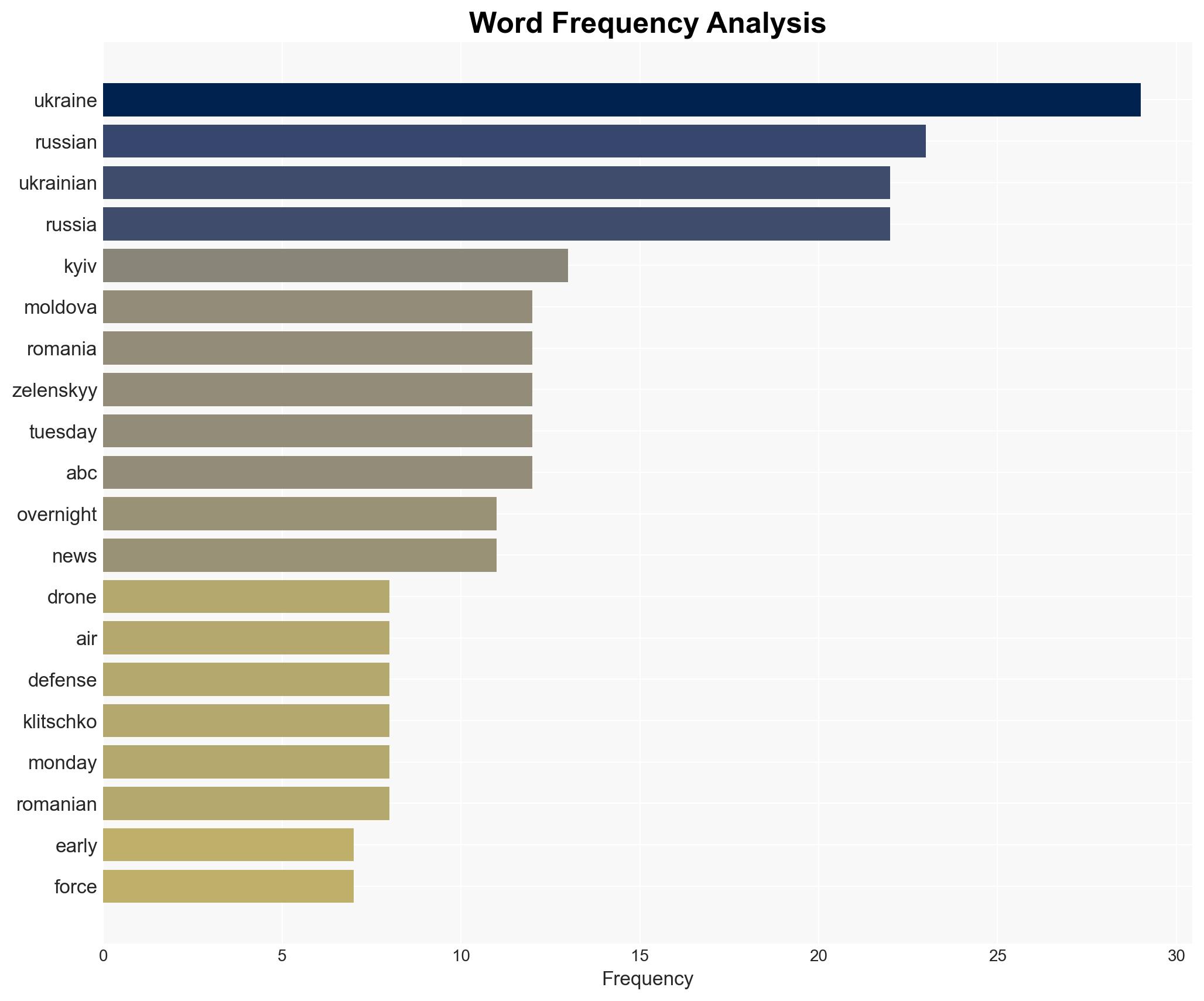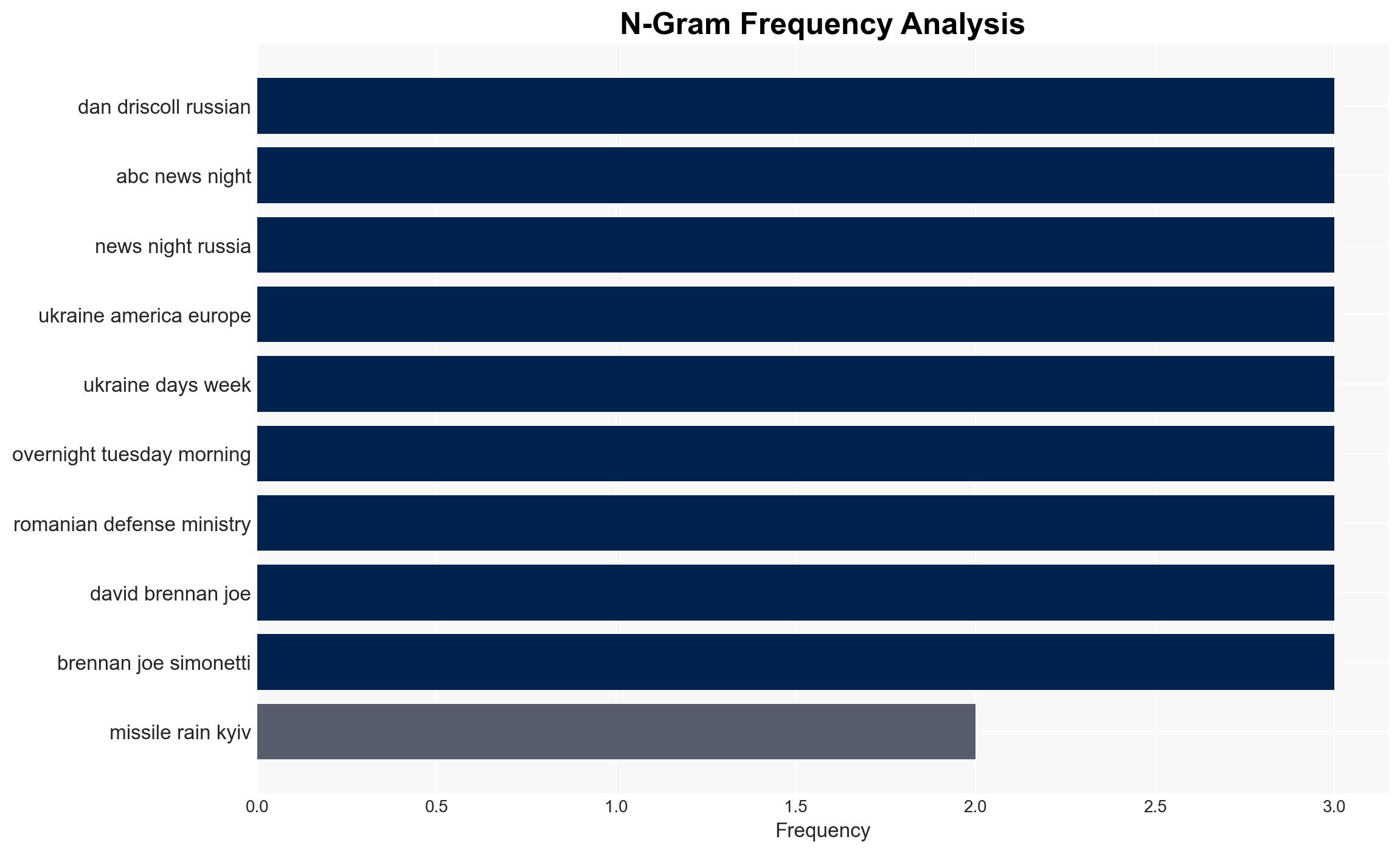Kyiv targeted in large Russian missile attack Mayor
Published on: 2025-11-25
AI-powered OSINT brief from verified open sources. Automated NLP signal extraction with human verification. See our Methodology and Why WorldWideWatchers.
Intelligence Report:
1. BLUF (Bottom Line Up Front)
The recent large-scale missile attack on Kyiv by Russian forces is likely a strategic maneuver to exert pressure on Ukraine amidst ongoing peace negotiations. With a moderate confidence level, the most supported hypothesis is that Russia aims to strengthen its negotiating position by demonstrating military capability and resolve. Recommended actions include reinforcing Ukraine’s air defense systems and increasing diplomatic efforts to de-escalate tensions.
2. Competing Hypotheses
Hypothesis 1: The missile attack is a calculated move by Russia to gain leverage in peace negotiations by showcasing military strength and resolve.
Hypothesis 2: The attack is a retaliatory response to perceived provocations or failures in diplomatic discussions, aiming to destabilize Ukraine and test international responses.
Hypothesis 1 is more likely due to the timing of the attack following peace negotiations and the strategic targeting of energy infrastructure, which suggests a deliberate attempt to weaken Ukraine’s position.
3. Key Assumptions and Red Flags
Assumptions include the belief that Russia is rationally pursuing strategic objectives and that the attack is directly linked to negotiation dynamics. Red flags include potential misinformation or propaganda from both sides, and the risk of misinterpreting Russia’s intentions, which could lead to escalation.
4. Implications and Strategic Risks
The attack on Kyiv could escalate into broader military conflict if perceived as an act of aggression by NATO members, especially given the drone intrusion into Romanian airspace. Cyberattacks on Ukrainian infrastructure could increase, further destabilizing the region. Economically, continued attacks may deter foreign investment and aid, exacerbating Ukraine’s economic challenges.
5. Recommendations and Outlook
- Enhance Ukraine’s air defense capabilities with international support to mitigate future missile threats.
- Intensify diplomatic efforts to resume peace talks and involve neutral mediators to facilitate dialogue.
- Best-case scenario: Successful de-escalation through diplomatic channels, leading to a ceasefire agreement.
- Worst-case scenario: Escalation into a broader conflict involving NATO, triggered by further territorial violations.
- Most-likely scenario: Continued sporadic attacks with intermittent diplomatic engagements, maintaining a status quo of tension.
6. Key Individuals and Entities
Volodymyr Zelenskyy, Vitali Klitschko, Dan Driscoll, Andrii Sybiha
7. Thematic Tags
Regional Focus, Regional Focus: Eastern Europe, Ukraine, Russia
Structured Analytic Techniques Applied
- Causal Layered Analysis (CLA): Analyze events across surface happenings, systems, worldviews, and myths.
- Cross-Impact Simulation: Model ripple effects across neighboring states, conflicts, or economic dependencies.
- Scenario Generation: Explore divergent futures under varying assumptions to identify plausible paths.
Explore more:
Regional Focus Briefs ·
Daily Summary ·
Support us





